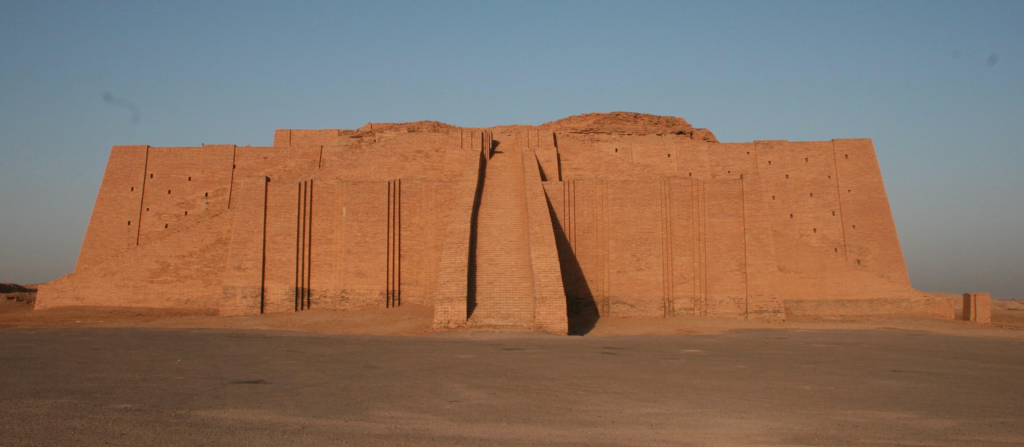
The Great Ziggurat of Ur: A Beacon of Ancient Civilization
In the ancient city of Ur, nestled in the fertile crescent of Mesopotamia, stands one of the most remarkable monuments of early human civilization: the Great Ziggurat of Ur. This colossal structure, a testament to the architectural and engineering prowess of the Sumerians, has captivated historians, archaeologists, and visitors for centuries.
The Great Ziggurat of Ur was constructed during the early Bronze Age, around 2100 BCE, by King Ur-Nammu and his successor, Shulgi. This towering ziggurat served as a massive temple complex dedicated to the moon god Nanna, the patron deity of Ur. Rising from the desert sands, the ziggurat was designed to be a bridge between the heavens and the earth, a place where the divine and mortal realms could converge.
The ziggurat itself is a step pyramid, consisting of three massive terraces that rise majestically into the sky. Originally, it would have been topped by a temple, now long lost to the ravages of time. The structure is built from mud bricks, with a core of sun-baked bricks and an exterior of kiln-fired bricks, which provided greater durability against the elements. Each of the terraces was once clad in brightly colored tiles, adding to the ziggurat’s visual splendor.

Ascending the ziggurat, one would be struck by its sheer scale and the ingenuity required for its construction. The staircases that lead to the summit are steep and narrow, designed to be both functional and symbolic. Climbing these stairs was likely an act of devotion, a physical manifestation of the ascent to the divine. The terraces themselves were adorned with lush gardens and trees, creating a verdant oasis in the arid landscape.
The Great Ziggurat was not merely a place of worship; it was the center of civic and ceremonial life in Ur. The temple at its summit served as a residence for the high priestess, who acted as the earthly intermediary between the god Nanna and the people. The ziggurat also hosted numerous religious festivals and rites, where offerings and sacrifices were made to ensure the favor of the gods and the prosperity of the city.
The significance of the ziggurat extended beyond its religious function. It was a symbol of the city’s wealth, power, and technological advancement. Its construction required immense resources and labor, reflecting the organizational skills and societal structure of ancient Ur. The ziggurat stood as a testament to the city’s ability to mobilize and manage such a grand project, highlighting the sophistication of Sumerian civilization.
For centuries, the Great Ziggurat of Ur remained a focal point of reverence and awe. However, as the centuries passed and empires rose and fell, the ziggurat fell into disrepair. The once-glorious structure was buried under layers of sand and forgotten by history, only to be rediscovered in the 19th century by British archaeologists.
Today, the partially restored ziggurat stands as a poignant reminder of the grandeur of ancient Mesopotamia. Efforts to preserve and study the site continue, offering invaluable insights into the Sumerian way of life. Visitors to the ziggurat can walk in the footsteps of ancient priests and kings, experiencing the same sense of wonder and reverence that this monumental structure inspired thousands of years ago.
The Great Ziggurat of Ur is more than just an archaeological site; it is a symbol of human aspiration and the enduring quest to connect with the divine. Its towering presence on the Mesopotamian plains serves as a beacon of the ingenuity, devotion, and resilience of one of history’s earliest civilizations. As we gaze upon its ancient bricks and ascend its storied steps, we are reminded of the profound legacy left by the people of Ur, a legacy that continues to inspire and captivate us to this day.